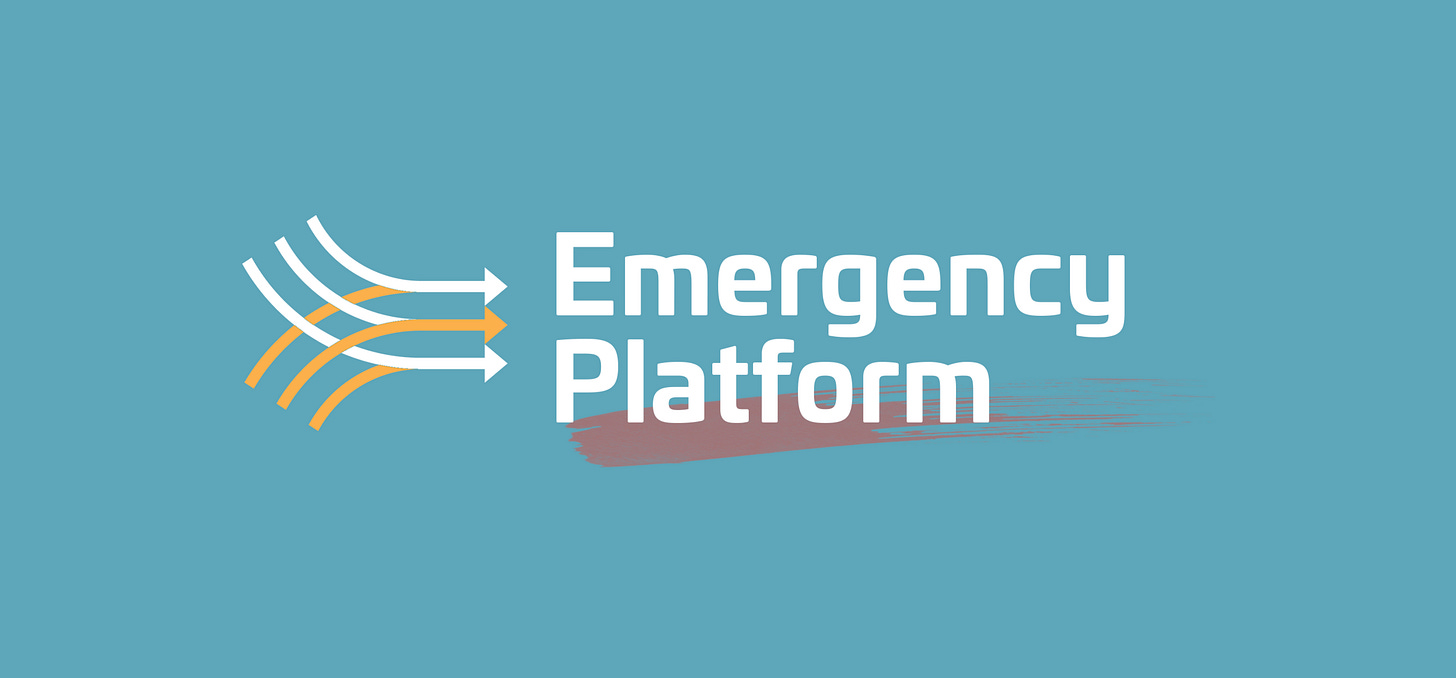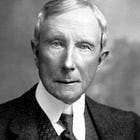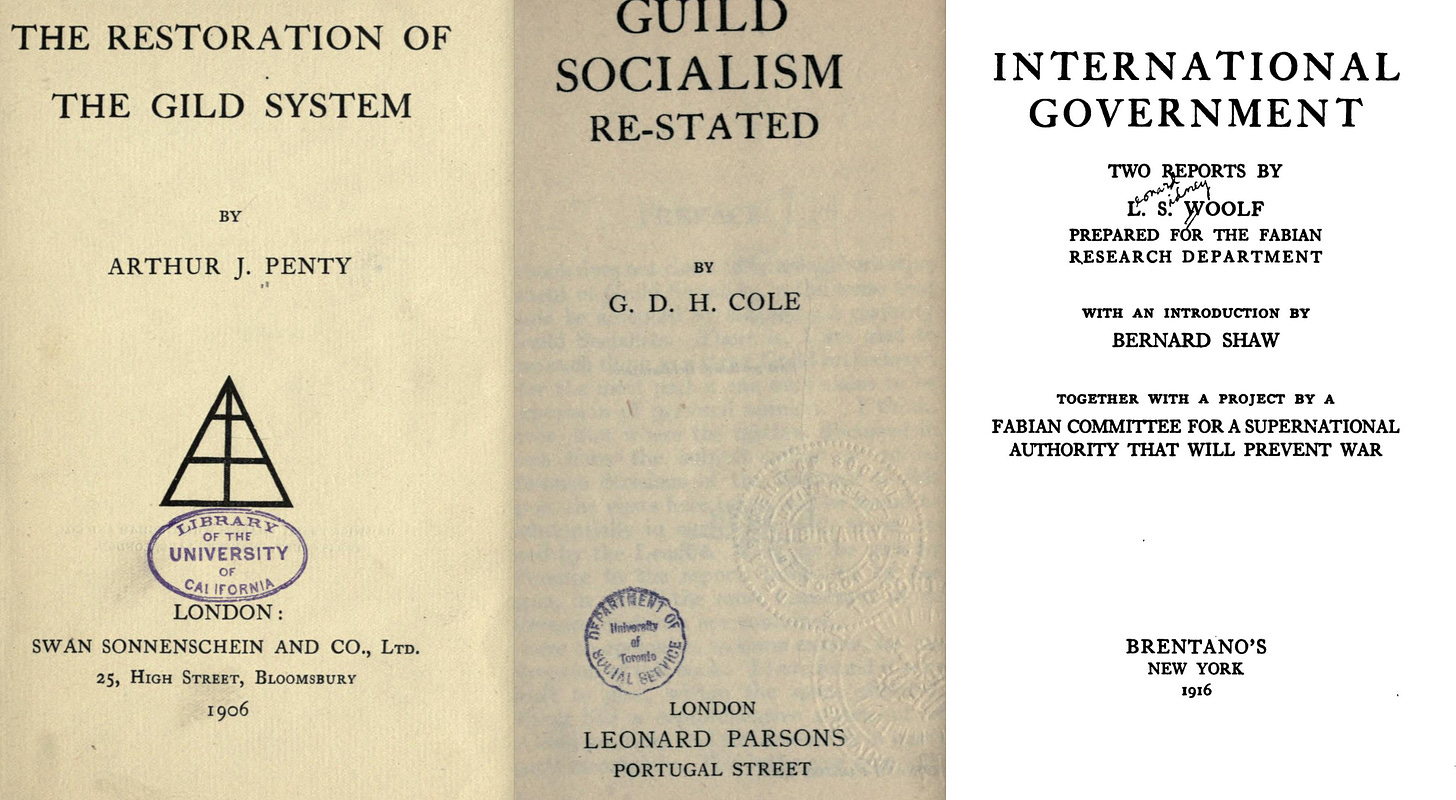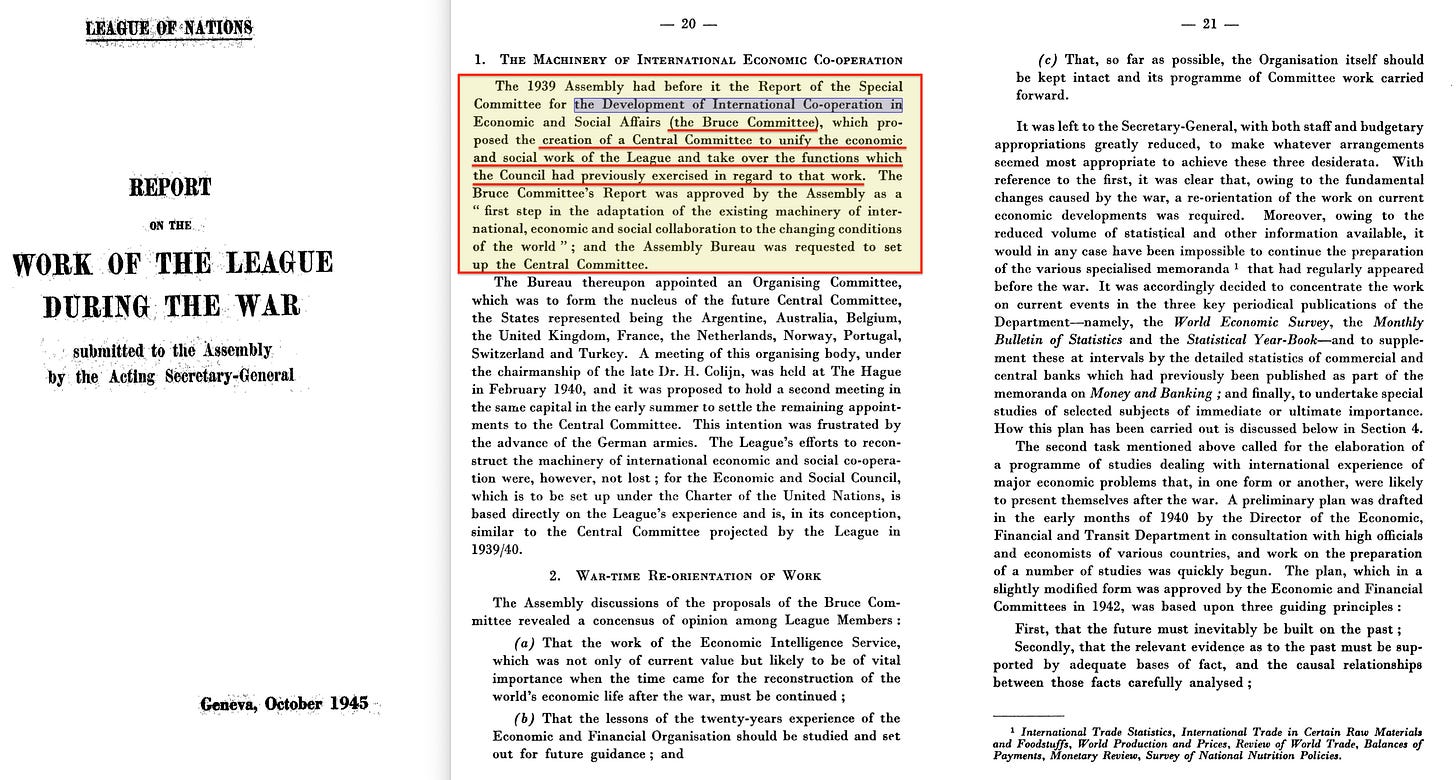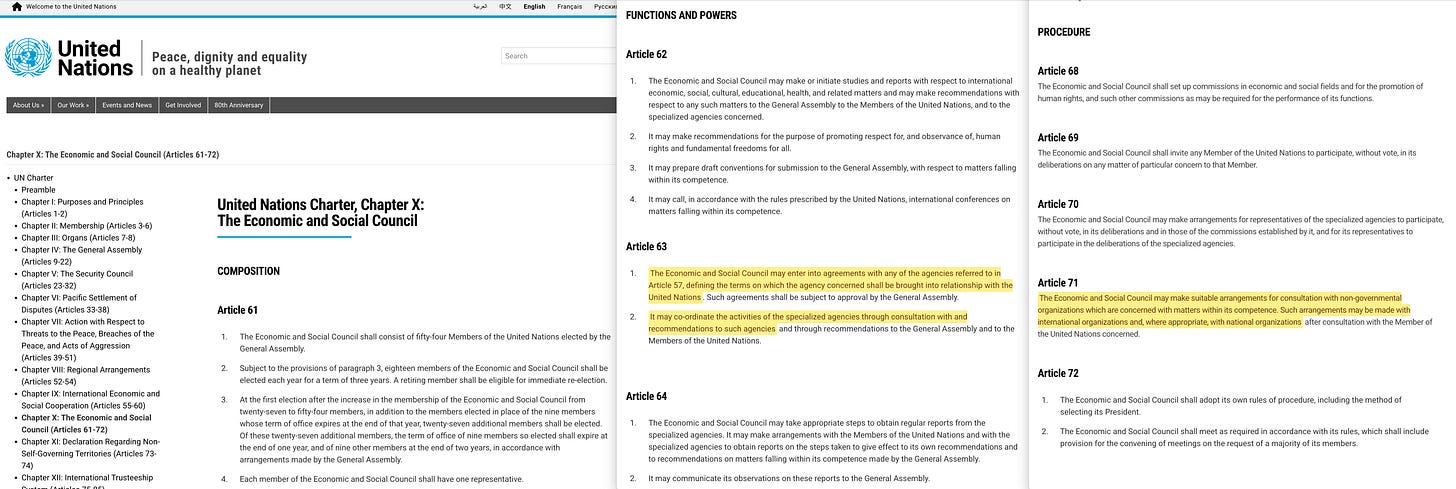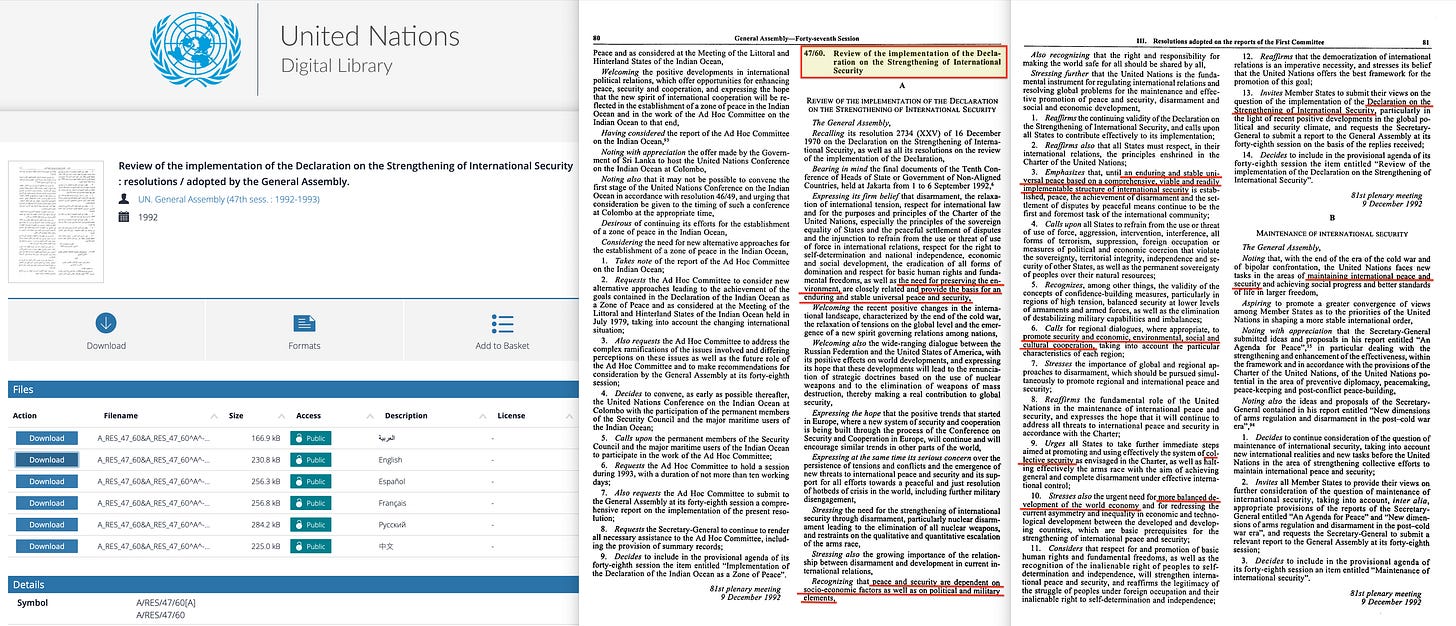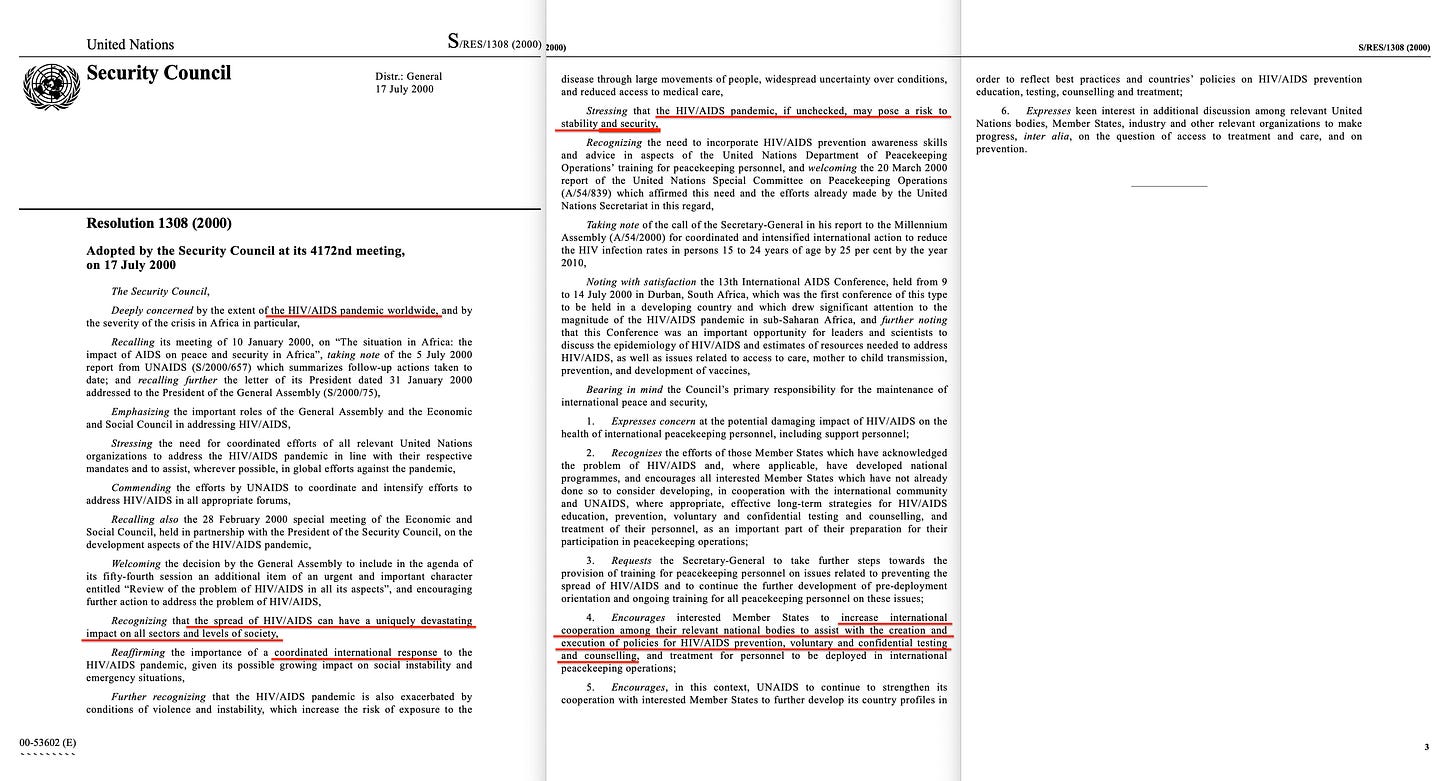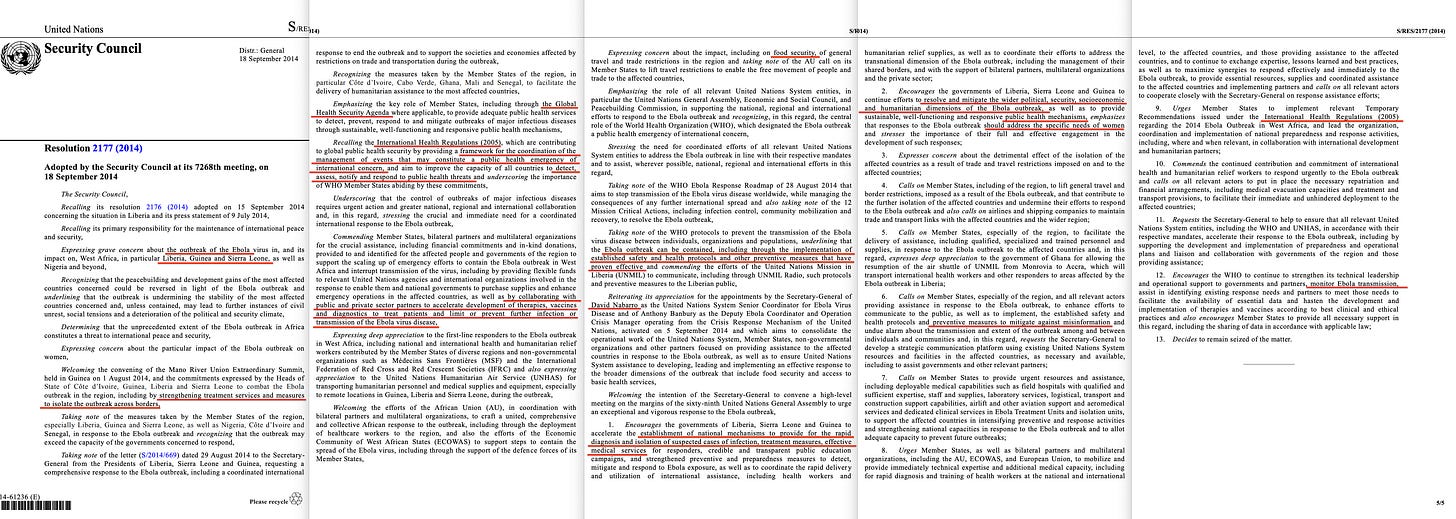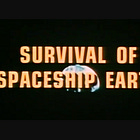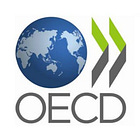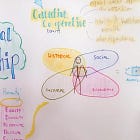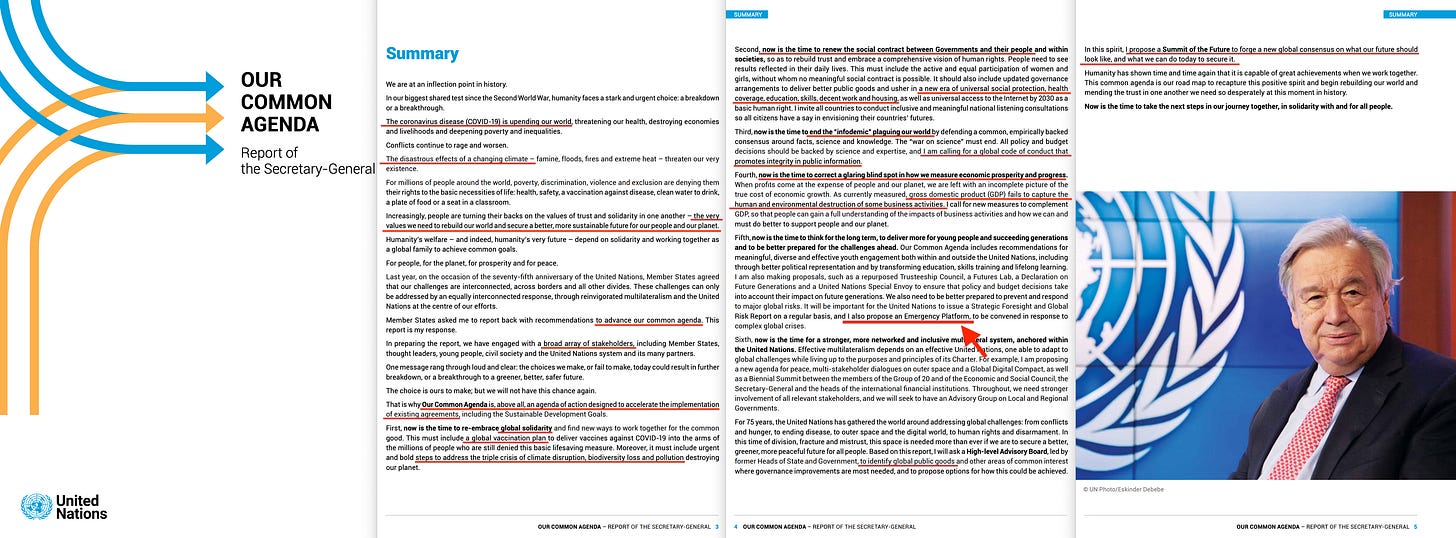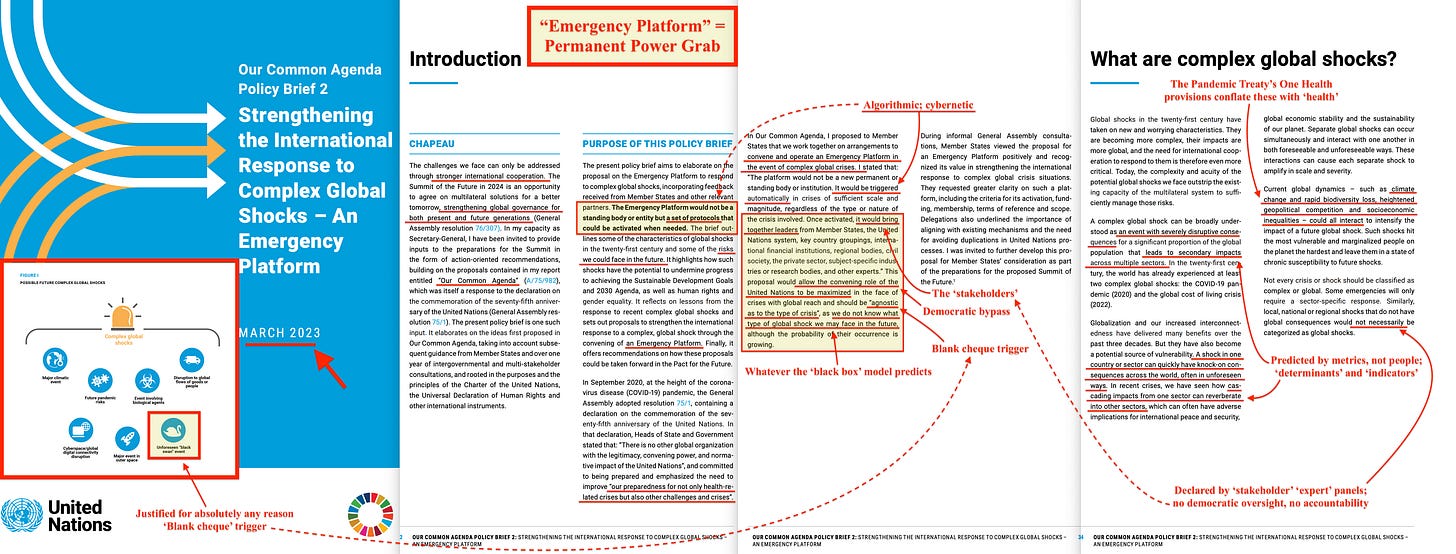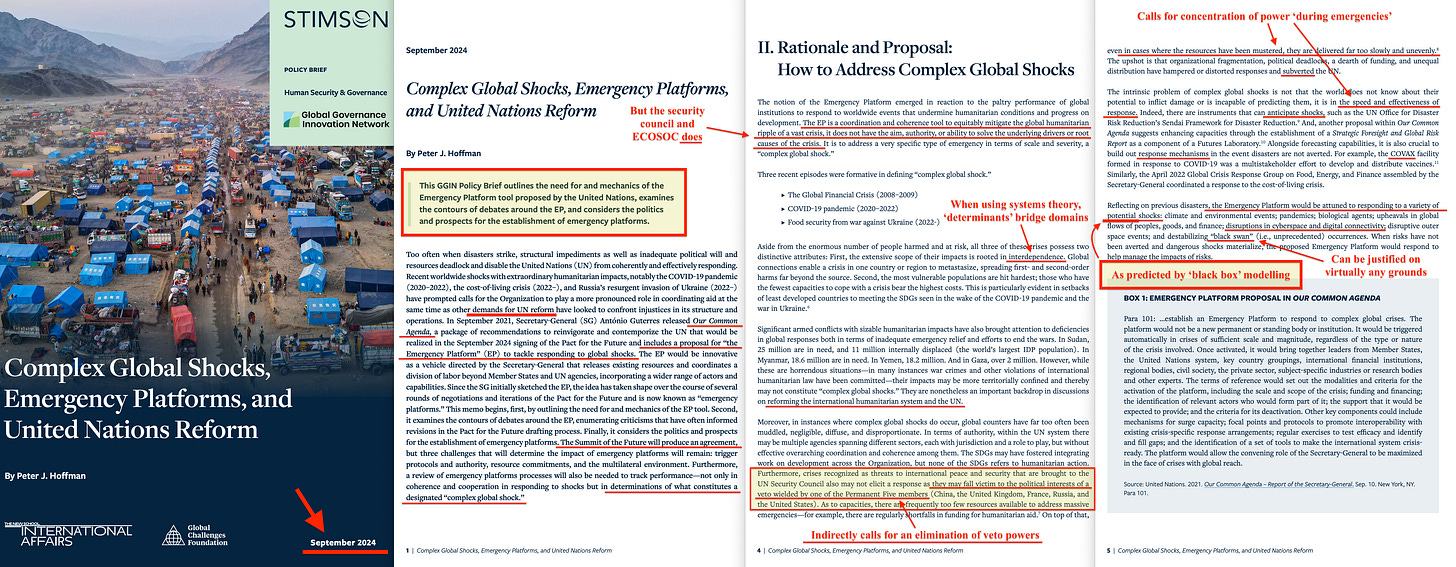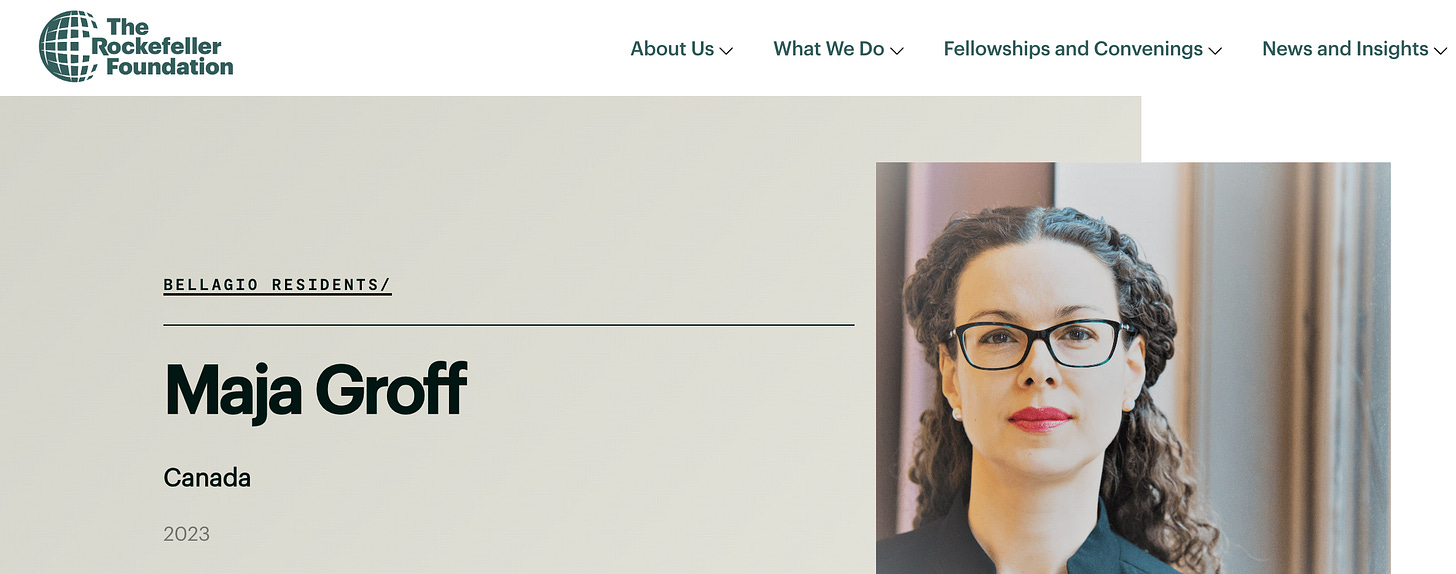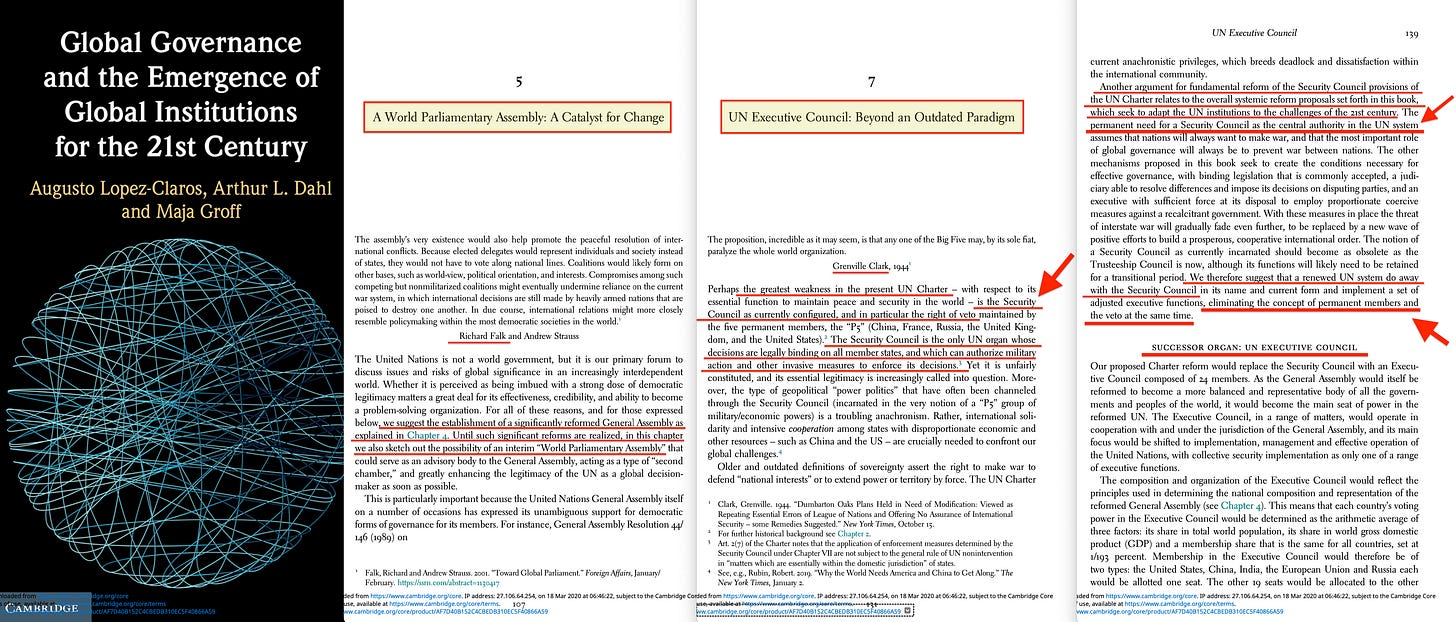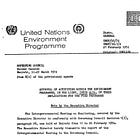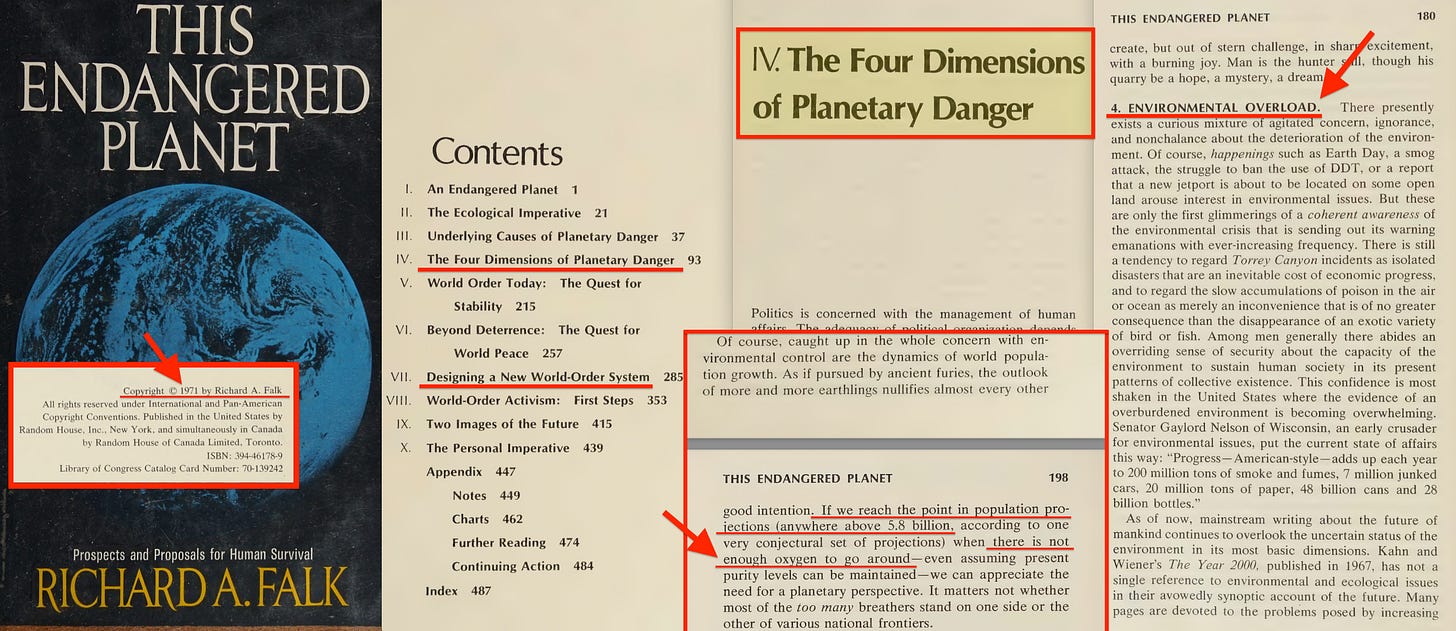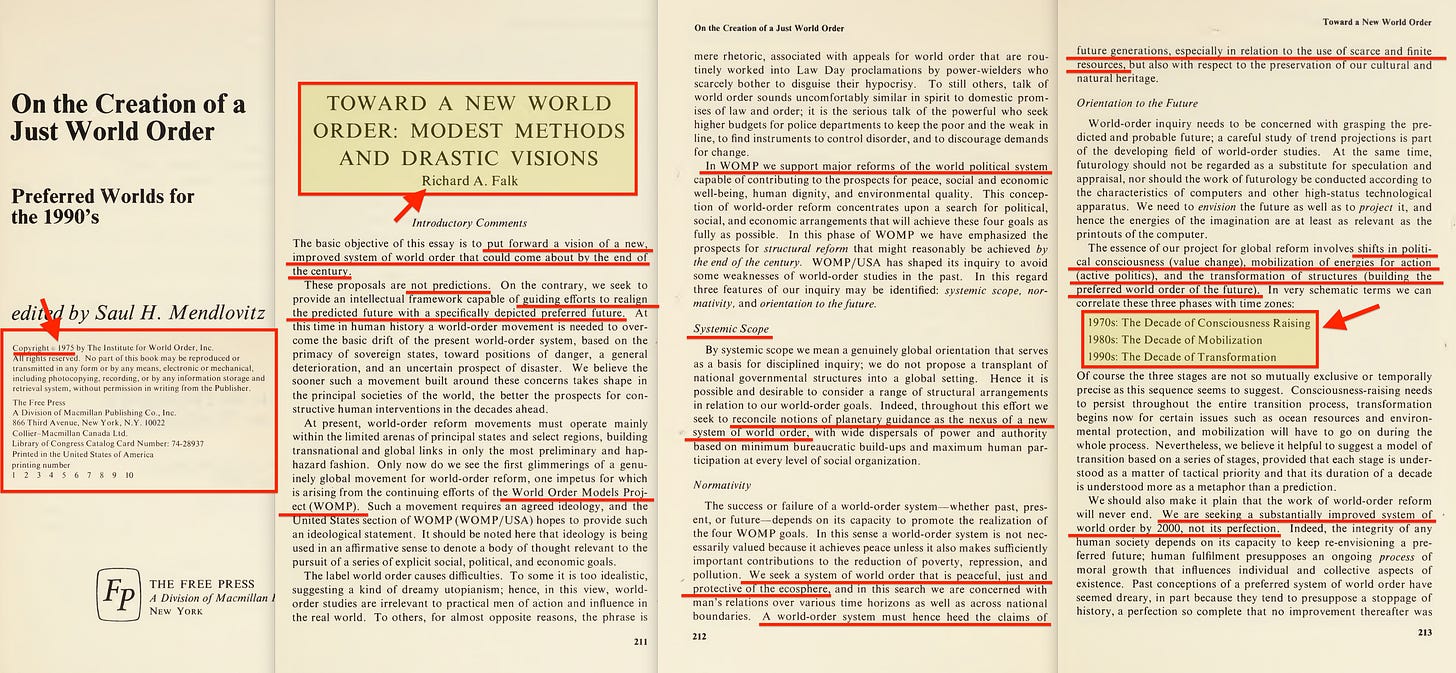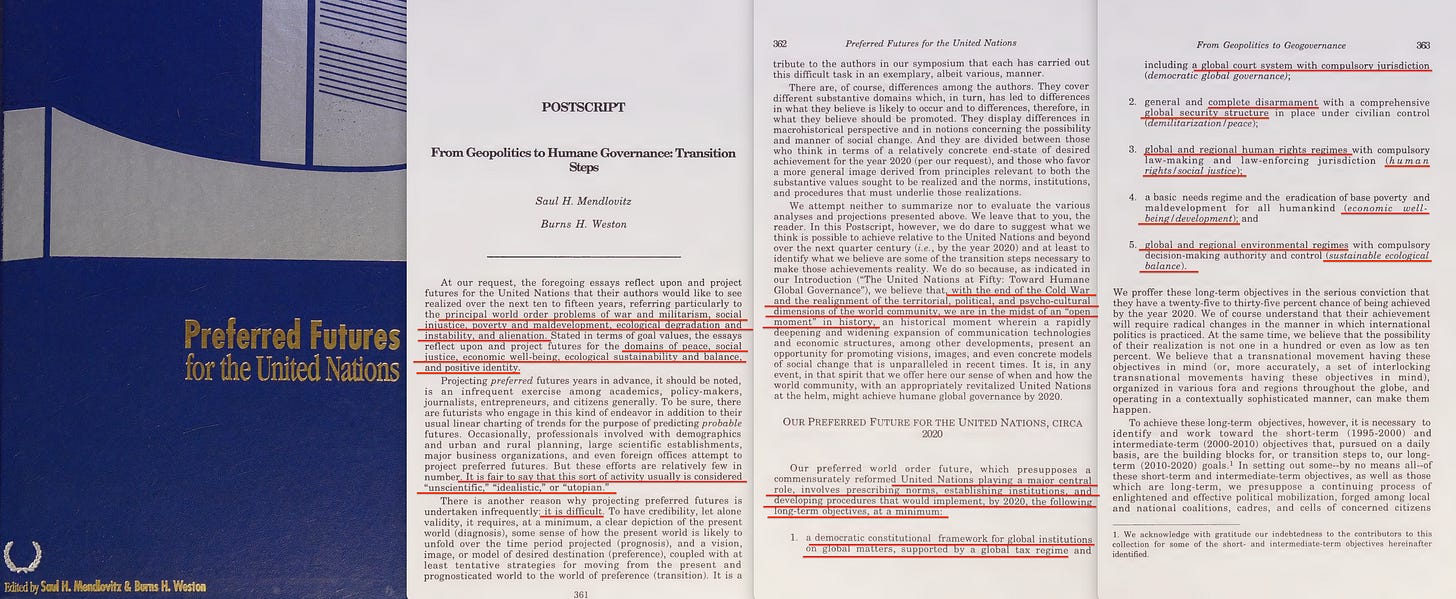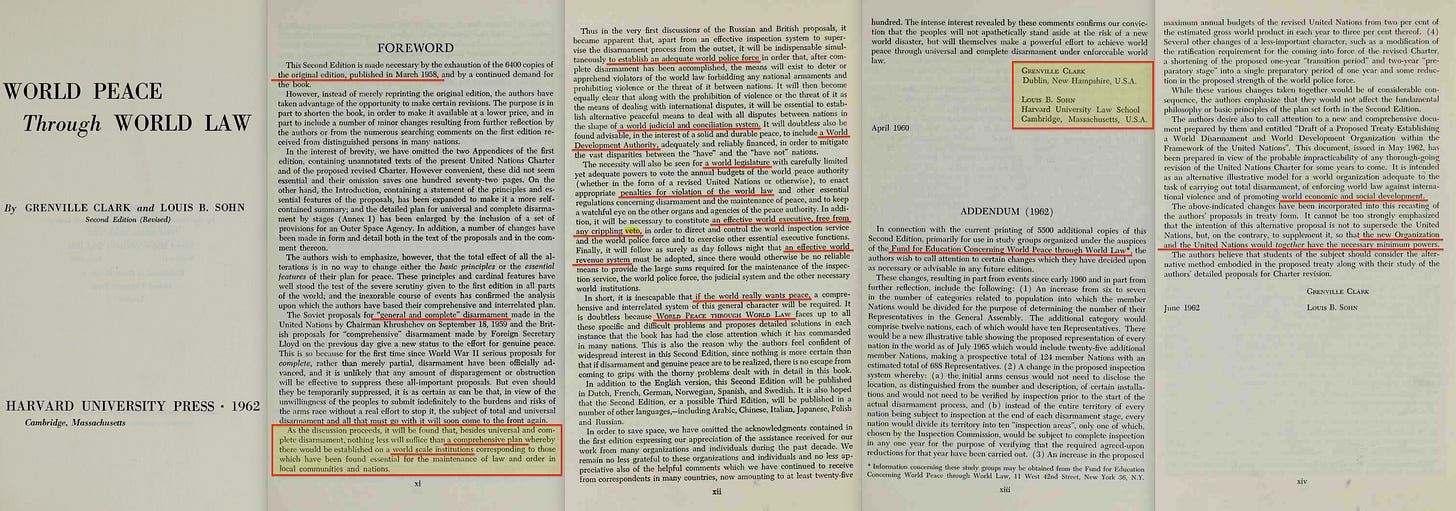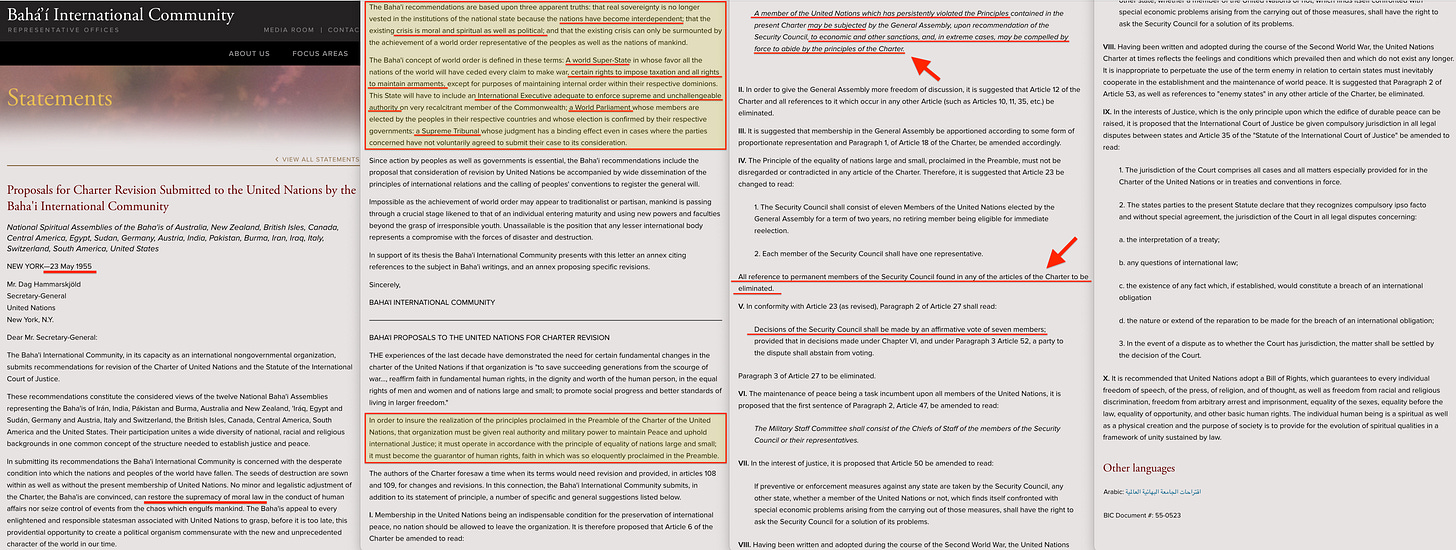The UN Emergency Platform
Infrastructure for Algorithmic Authoritarianism
The UN's proposed Emergency Platform is presented as contemporary crisis management — a response to pandemics, climate disruption, and complex global shocks1. This framing obscures its actual function: the activation of governance architecture deliberately constructed over two centuries. The system operates through what can be termed an ‘infrastructure constitution’ — binding authority that flows through technical coordination rather than democratic mandate, creating comprehensive control while maintaining the appearance of voluntary cooperation.
The critical question is not whether this architecture exists, but how it maintains legitimacy while operating above traditional constitutional constraints. The answer lies in understanding how clearing house logic scaled from financial coordination to global governance, supported by institutional continuities and philosophical inversions that transformed law, purpose, and authority itself.
Origins in Clearing House Logic
The DNA of contemporary global governance traces to the London Bankers' Clearing House established in the 1770s. Rather than requiring bilateral settlement between individual banks, the clearing house created a central node that standardised procedures, netted obligations, and established common rules binding all participants. Its genius lay in achieving control without requiring governmental authority — banks participated voluntarily, yet exclusion would have meant commercial suicide.
This mechanism achieved several critical innovations that would later scale globally:
Infrastructure Dependency: The clearing house became indispensable infrastructure. Banks could theoretically operate outside it, but non-participation meant exclusion from the financial system's essential functions.
Technical Authority: Rules appeared as operational necessities rather than political impositions. Standards were ‘technical requirements’ for system participation, not governmental mandates.
Voluntary Compulsion: Participation remained formally voluntary while becoming functionally mandatory. Commercial necessity replaced legal compulsion as the enforcement mechanism.
Neutral Mediation: The clearing house appeared to serve all participants equally, obscuring how it fundamentally restructured relationships between them.
The Bank of England's evolution through the 19th century demonstrated how this logic could be scaled and nationalised. The Bank Charter Act of 18442 granted the Bank of England monopoly over note issuance, transforming it from one institution among many into what would later be termed a ‘public utility’ — a technocratic organ exercising monetary sovereignty through technical coordination rather than direct governmental control. All financial flows ultimately cleared through this single institutional node that appeared independent while exercising sovereign monetary authority.
The International Vision: From Wolf to Guild Socialism
Coinciding with Alfred de Rothschild’s praise for the clearing model at the 1892 Brussels International Monetary Conference3, Julius Wolf's 1892 proposal to scale the London clearing mechanism internationally provided the crucial conceptual bridge4. Wolf explicitly envisioned replacing bilateral diplomatic negotiations with multilateral rule-based mediation through an international clearinghouse — exactly the logic later implemented through the Bank for International Settlements, Bretton Woods, and the comprehensive UN system.
The revisionist Marxist, Eduard Bernstein, proposed evolutionary socialism in 18995, adding a critical ideological component to Wolf's technical framework. Rather than revolutionary seizure of power, Bernstein proposed gradual transformation through institutional reform that would make markets serve social rather than private ends. This fusion of clearing house logic with social justice objectives would go on to become central to all subsequent international governance proposals — from the League of Nations through the United Nations to contemporary sustainable development frameworks.
Building on this foundation, Fabian Guild Socialism developed the theoretical architecture for scaling coordinated governance across multiple levels:
Arthur Penty (Local Level)6: Proposed guild organisation of local industries and crafts, replacing competitive capitalism with cooperative coordination through functional authorities managing specific trades and services.
GDH Cole (National Level)7: Extended guild principles to national coordination, advocating functional organisation by economic and social purpose rather than geographical territory. Cole's vision involved national guilds coordinating production, distribution, and social services through technical expertise rather than electoral politics.
Leonard S. Woolf (International Level)8: Synthesised local and national functionalism into the comprehensive blueprint for international governance. His 1916 ‘International Government’ outlined how international organisations could become ‘functional siphons of sovereignty’ — handling trade, communications, health, labor standards through permanent coordinating bodies operating above national authority.
This three-tier functionalist architecture (local guilds → national coordination → international administration) provided the systematic framework for draining sovereignty through technical processes rather than direct political assault. Woolf's key insight was that if essential functions were performed internationally, national governments would become increasingly irrelevant to actual governance of economic and social life — especially once economic differences between states were eroded by the removal of tariffs and the free movement of goods and people, which would align neighbouring states out of sheer economic necessity.
Woolf’s 1916 blueprint emphasised that this system would work through ‘soft law’ that would gradually harden into binding obligations. International ‘recommendations’ would become commercial necessities as participation in international systems required compliance with international standards — precisely clearing house logic applied to governance rather than financial transactions.
A century later, this is exactly what the neoliberal wave of the 1990s accomplished: WTO rulings, IMF structural adjustment programmes, and OECD ‘best practices’ transformed non-binding guidelines into inescapable commercial obligations, enforcing policy shifts without the need for democratic mandate, and Lawrence Summers, Alan Greenspan, Paul Krugman, Jeffrey Sachs, Joseph Stiglitz, Frederick Mishkin, and Robert Rubin became the public face of this transformation.
Their authority clothed clearing house logic in the language of efficiency, growth, and scientific necessity, while in practice hollowing out national sovereignty in favour of global financial coordination.
Zimmern's League Implementation: Economics as Justice Vehicle
Alfred Zimmern designed the institutional architecture that would implement this vision through the League of Nations. Zimmern's contribution was recognising how economics could serve as the universal coordination mechanism for social justice objectives.
Zimmern's design for the League operated on Guild Socialist principles: lasting peace required continuous technical organisations handling specific functions, not just diplomatic conferences. This created permanent specialised organisations managing health, labor, communications, economics — exactly as the three-tier functionalist framework had proposed.
Zimmern's crucial innovation, elaborated in his 1926 work ‘The Third British Empire’, was reframing international order as an ‘empire of international social justice’ where economics would serve as the ‘unit of account’ for organising justice globally. This anticipated the Bretton Woods system where monetary coordination would enable comprehensive economic and social planning through technical mechanisms.
Rather than imposing justice through force, Zimmern's League architecture would embed justice objectives in the technical coordination mechanisms themselves. Economic coordination would not be politically neutral but would systematically direct flows toward predetermined social justice outcomes through clearing house mechanisms that appeared voluntary while becoming commercially essential.
When the League collapsed, these technical bodies largely continued operating, providing the institutional foundation for the UN system that would formally replace it. Zimmern's functional architecture became the template for ECOSOC's mandate to coordinate specialised agencies under unified administration — exactly the system outlined in Guild Socialist theory but implemented at Woolf’s global scale.
From League to UN: Continuity by Design
The transition from League of Nations to United Nations represented institutional continuity, not democratic innovation. As the League's own transition documents acknowledged: ‘the new World Organisation is, in many respects, able to 'take over' from the old’. This included specialised agencies, NGO networks, research capabilities, staff, buildings, archives, and coordination mechanisms developed since 1919.
The 1944 Dumbarton Oaks conference reveals the UN was conceived from inception as continuation and refinement of League governance structures, not replacement of them. The blueprint paired an executive Security Council with a coordinating Economic and Social Council (ECOSOC), directly implementing recommendations from the 1939 Bruce Committee9, which had called for a ‘Central Committee’ to unify the economic and social work of the League. Codified at Dumbarton Oaks as ECOSOC, this demonstrated that the UN’s dual-layer constitution was not improvisation but pre-designed architecture.
The Economic and Social Council implemented exactly the architecture Zimmern had designed for the League — functional coordination through specialised agencies (WHO, ILO, FAO, UNESCO) that would systematically direct economic flows toward social justice outcomes. ECOSOC's mandate to coordinate specialised agencies and accredit NGOs created the institutional mechanism for embedding Bernstein's social justice objectives in clearing house coordination mechanisms. Through Article 71 accreditation, ECOSOC curated civil society alignment from inception. The appearance of pluralistic inclusion masked manufactured consensus: NGOs were filtered to amplify UN priorities while excluding dissent, ensuring legitimacy without democracy
This created the dual-layer constitutional architecture that operates today:
UNSC as Executive Trigger: Under Chapter VII of the Charter, the Security Council uniquely holds binding enforcement authority to declare threats to peace and security. This executive function was designed to extend beyond military conflict to encompass any ‘complex global shock’ affecting multiple domains.
ECOSOC as Administrative Brain: By contrast, under Articles 63 and 7110, ECOSOC was deliberately mandated to coordinate specialised agencies and accredit NGOs, embedding Zimmern’s social-economic governance model into the UN’s constitutional framework. This administrative function translates executive triggers into continuous technical governance across health, labour, education, and environment.
Integrated Financial Architecture: The system was designed to coordinate with Bretton Woods institutions (IMF, World Bank) and the Bank for International Settlements, creating integrated architecture where monetary coordination serves social justice objectives through technical mechanisms that appear politically neutral.
The specialised agencies implemented Guild Socialist functionalism exactly; each handles specific domains (health, labor, agriculture, education) through technical standards that gradually become binding on member states through commercial necessity and international coordination requirements. This creates governance through expertise rather than democracy, where technical bodies make ‘recommendations’ that harden into binding standards through clearing house mechanisms and financial rewards.
Resolution 47/60 as Activation Point
Resolution 47/60 of December 199211, did not expand the UN’s remit — it activated the comprehensive mandate designed at Dumbarton Oaks. What appeared as institutional mission creep was in fact the system reaching operational maturity.
The resolution's language directly echoes the founding mandate for ‘harmonising the actions of nations’ across economic, social, and humanitarian domains. What appears as expansion actually represents the system reaching operational maturity after nearly 50 years of institutional development. The resolution operationalised the UN's founding design by formally expanding ‘peace and security’ to encompass ‘socio-economic factors as well as political and military elements’.
This expansion established legal foundation for what would become comprehensive enforcement mechanisms:
Standards Development: ‘Confidence-building’ language provided justification for technical standards development that would later become procurement requirements.
Financial Integration: ‘Relaxation of international tension’ enabled integration of peace/security considerations into IMF, World Bank, and emerging ESG frameworks.
Identity Integration: ‘Respect for human rights and freedoms’ linked compliance verification to identity and access systems.
Audit Requirements: ‘Monitoring of international peace and security’ justified corporate reporting obligations and supply chain due diligence.
Data Controls: The ‘comprehensive structure’ enabled access-and-benefit-sharing regimes controlling knowledge flows.
Procurement Integration: Government purchasing could integrate human rights, sustainability, and security compliance as standard requirements.
Health Integration: By framing public health as inseparable from peace and security, the resolution opened the way for WHO protocols and ‘health in all policies’ frameworks to become binding across housing, labor, education, and environment, underpinning today’s Pandemic Treaty and the ‘determinants’ paradigm, where health serves as the entry point for comprehensive jurisdiction.
The resolution's timing further reveals integration with environmental frameworks — coming just months after the Rio Earth Summit, it provided legal authority to enforce sustainability coordination through expanded Chapter VII powers.
Rio established that environmental challenges required coordinated international action; Resolution 47/60 provided the mechanism to make that coordination binding through Security Council authority.
… as well as the need for preserving the environment, are closely related and provide the basis for an enduring and stable universal peace and security... peace and security are dependent on socio-economic factors as well as political and military elements… an enduring and stable universal peace based on a comprehensive, viable and readily implementable structure of international security… promote security and economic, environmental, social and cultural cooperation… collective security…
Socio-economic factors point directly to the indicators and determinants12 — which we’ll return to shortly.
From 47/60 to the Present: Precedent in Action
The broadened mandate of Resolution 47/60 did not remain theoretical. In July 2000, the Security Council adopted Resolution 130813, declaring HIV/AIDS a global security risk — the first time a health issue was formally recognised under the peace and security rubric. This resolution laid the groundwork for large-scale, internationally coordinated surveillance programmes such as PEPFAR (President’s Emergency Plan for AIDS Relief). While presented as humanitarian assistance, PEPFAR created enduring global monitoring and reporting systems tied to UNAIDS and WHO indicators14, embedding health surveillance in a metrics-based architecture that later became interoperable with ESG-style measurement frameworks15.
PEPFAR’s monitoring framework became a template later mirrored in sustainability and ESG-style reporting systems, where indicator compliance determines access to finance and procurement What began as epidemic tracking became a model for linking public health data into finance, procurement, and compliance rails.
This surveillance model was further consolidated in 2014 with the launch of the Global Health Security Agenda16 (GHSA), a US-led multilateral framework explicitly designed to prevent, detect, and respond to infectious disease threats. Built on PEPFAR’s indicator-driven reporting infrastructure, GHSA required participating states to align national systems with standardised monitoring and evaluation tools coordinated by WHO, CDC, and other partners. What had begun as disease-specific tracking now became a comprehensive global health security framework, embedding public health surveillance within the language of national and international security. By formalising compliance through joint external evaluations and peer accountability, GHSA extended the precedent that health emergencies constituted not just humanitarian issues but matters of binding international security concern.
Yet even as GHSA expanded the securitisation of health, critical voices warned of its distortions. A widely circulated Global Health Council policy brief argued that the ‘health security’ frame — born from HIV/AIDS (Resolution 1308) and expanded through GHSA — had the effect of commingling foreign policy, national defense, and humanitarian medicine into a single security logic. While this framing drew funding and political urgency, it also entrenched surveillance-heavy approaches. The brief called instead for a ‘holistic’ definition of global health security that elevated systemic resilience, gradually transforming health from a humanitarian concern into a lever of global governance through metrics, surveillance, and security doctrine.
Fourteen years later, Resolution 217717 went further by invoking Chapter VII powers in response to the Ebola outbreak in West Africa, treating a virus with the same binding authority previously reserved for acts of war. Since then, the Council has steadily integrated climate-related risks into peacekeeping mandates and deliberations, framing environmental change as a destabilising factor in conflict prevention.
Each step entrenched the precedent: what began as a Cold War body designed to police inter-state aggression gradually expanded into a universal crisis authority, legitimised through health and environmental security. The Emergency Platform builds directly on this trajectory, transforming episodic precedents into a permanent operating doctrine.
Philosophical Inversions as Substrate
The infrastructure constitution operates through systematic inversion of classical concepts that created intellectual foundations for technocratic authority. These inversions make comprehensive coordination appear as natural necessity rather than political choice:
Spinozan Inversion18: Benedict Spinoza created the foundation where technocratic authority claims to discover rather than choose objectives. Where classical teleology placed purpose first (governance judged against ends), Spinoza's system made law/necessity primary, with purpose emerging from systemic requirements. This enables technical standards to appear as discovered necessity rather than imposed preference.
Legal Ethics Inversion19: Hermann Cohen's proposition that law creates ethics rather than being constrained by it provided justification for metrics-as-morality. Once standards exist, compliance becomes ‘the good’ — exactly the moral inversion that legitimises technical enforcement mechanisms. This makes algorithmic compliance appear as ethical behavior rather than mechanical submission.
Scientific Religion20: Paul Carus's declaration that science constitutes the new religion — where truth equals alignment with eternal law discovered by science — removes transcendence and makes model outputs sacred. This provides moral legitimacy for algorithmic governance where computational results carry religious authority, making resistance appear unethical, anti-science, anti-rational and anti-social.
Systems Science2122: Alexander Bogdanov's universal systems science (Tektology) broke down all domains (biology, economics, society, culture) into interchangeable systems components. This provided the methodological bridge enabling the philosophical inversions to become operational: if everything is a system, everything can be managed through identical planning protocols.
The Omega Point23: Teilhard's mystical concept of planetary unity was co-opted by systems theorists into justification for programming evolution through continuous planning. The Omega Point became convergence of program elements, providing spiritual language for comprehensive technical coordination.
These philosophical foundations enable the infrastructure constitution to present itself as moral necessity, cosmic law, and evolutionary destiny rather than elite control through technical mechanisms.
The clearing house architecture achieves comprehensive legitimacy by appearing as humanity's natural development rather than as a sophisticated coordination system by a select few guiding ‘Spaceship Earth’.
The Emergency Platform: Algorithmic Authoritarianism Disguised as Crisis Management
The UN Emergency Platform represents the culmination of this two-century development — the mechanism that converts the infrastructure constitution from latent architecture into operational algorithmic authoritarianism. Rather than creating new institutions, the Platform functions as the ‘operational fuse’ that activates existing enforcement infrastructure under crisis justification.
The Platform institutionalises permanent emergency governance through its definition of ‘complex global shocks’ — events characterised not by objective severity but by cascading consequences across multiple domains. Once any domain claims determinants over others, it can legitimately intervene everywhere:
Health determinants reframe housing, work, education, and environment as medical jurisdiction
Environmental determinants absorb economic policy, land use, and consumer behavior into ecological governance
Security determinants capture inequality, education, and health into Security Council authority
Digital determinants subsume privacy, speech, and information into cyber-governance
The Platform codifies this mechanism through automatic activation when crises display ‘cross-border and cross-domain spread’. Early-warning systems surface determinant chains in advance, allowing interventions based on projections rather than events. This ensures virtually any disruption can qualify as a ‘global shock’ requiring comprehensive coordination.
The indicator and determinants-based trigger system depends on three institutions that convert surveillance data into ‘evidence-based’ policy recommendations:
OECD defines what gets measured through statistical frameworks and policy indicators
ISO creates technical standards ensuring measurements are globally interoperable
IIASA processes standardised data through integrated assessment models that present political choices as technical necessities
This triangle creates ‘methodological imperialism’ — participation in international systems requires adopting their measurement methods, analytical frameworks, and model outputs. Democratic bypass occurs through technical authority: politicians receive algorithmic outputs as scientifically neutral advice rather than political choices.
Six Rails Activation: From Voluntary to Binding
When the Emergency Platform activates, it simultaneously triggers all six enforcement mechanisms that convert UN frameworks into binding constraints:
Accreditation: UN standards become operational requirements for market participation through ISO technical committees and ILAC/IAF recognition networks
Liquidity: Financial systems route capital based on UN compliance through NGFS climate scenarios, ESG scoring, and prudential standards
Credentials: Digital identity systems make participation conditional on UN framework compliance through health certificates, supply chain verification, and access controls
Audit: Due diligence laws convert UN sustainability frameworks into legal liabilities through mandatory assurance requirements
Data Governance: Access-and-benefit-sharing regimes control who can develop alternative models or verify UN claims
Procurement: Government purchasing (13% of GDP) embeds all previous rails simultaneously, universalising UN compliance through supply chain cascade effects
The net effect is very simple: unless you comply at every level, you are cut off — from markets, from capital, from supply chains. Non-compliance means exclusion, and exclusion means collapse.
But as we saw during the alleged pandemic, this will be presented as a ‘voluntary’ choice. You are free to decide whether you want to feed your children, or be cast as an antisocial, irrational, dangerous, unethical, selfish anti-science dissenter.
Completely your ‘voluntary’ choice. That’s what makes ‘soft law’ so special.
Digital Twins and Algorithmic Control
The most dangerous aspect is integration with computational modeling systems that process surveillance data into governance engines. Future predictive ‘Digital twin’ models operate through a simple control mechanism:
R = Desired Future - Predicted Future.
‘Resilience gaps’ are identified wherever models predict deviation from desired outcomes, justifying immediate intervention.
This creates algorithmic moral authority where computational outputs determine virtue and vice. Climate models always show probability of dangerous outcomes, epidemiological models identify potential disease vectors, social models detect likely destabilising trends. The mathematical (un)certainty of future problems provides permanent justification for emergency authority.
The complete architecture achieves totalitarian control through infrastructure dependency rather than visible coercion:
Comprehensive Behavioral Control: Surveillance data feeding models that output ‘resilience gaps’ creates algorithmic governance where human behavior gets continuously optimised toward system-defined targets
Computational Authoritarianism: Policy decisions emerge from models processing vast datasets through opaque algorithms, making democratic deliberation impossible
Permanent Emergency: Broad crisis definitions and predictive models institutionalise permanent crisis governance where emergency becomes the normal operating mode
Epistemic Totalitarianism: Controlling data access achieves the deepest control — determining what can be known and therefore contested
Parameter Adjustment Governance: Control operates through technical parameter adjustments rather than visible policy changes — algorithmic models updated, risk weights modified, compliance thresholds adjusted through decisions that appear neutral while fundamentally altering system operation
Running alongside the technical architecture are parallel narratives that frame planetary governance as humanity’s destiny rather than elite policy. Whether cast in spiritual, mystical, or evolutionary language, these narratives supply metaphysical legitimacy — portraying algorithmic authority as cosmic necessity. This layer will be treated separately, but its function is clear: to mask design as destiny.
Conclusion: The Constitutional Crisis of Algorithmic Authoritarianism
The infrastructure constitution reveals how governance evolved from London clearing houses through Guild Socialist functionalism to a comprehensive system that achieves totalitarian authority without democratic mandate. The Emergency Platform represents the activation switch for architecture designed over two centuries to bypass constitutional constraints through technical infrastructure.
This system embeds control in essential technical systems that modern life depends upon, making resistance practically impossible without forfeiting economic survival. Zimmern’s international social justice achieved through economics has become reality. Unlike historical authoritarianism revealed through obvious repression, this architecture maintains the appearance of voluntary cooperation and scientific objectivity while systematically eliminating democratic substance.
The critical danger is operational irreversibility. Once fully deployed, the technical complexity, economic integration, and crisis justification mechanisms create structural resistance to democratic dismantling. The UN Security Council — armed with predictive models and legitimised by sustainability rhetoric — increasingly resembles a global vanguard claiming permanent authority… because the meta-crises can never end.
The challenge for democratic societies is immediate: developing oversight mechanisms that can constrain this architecture before it reaches full operational capacity. The infrastructure itself carries legitimacy by appearing as neutral mediation serving collective needs, when it represents the most sophisticated governance system ever developed — comprehensive behavioral control through commercial necessity that maintains voluntary appearances while making resistance practically impossible.
Understanding this genealogy reveals governance through infrastructure rather than authority, compliance rather than consent, and commercial dependency rather than democratic choice. The clearing house logic that began coordinating financial transactions between London banks has evolved into coordinating all human behavior through global technical infrastructure operating above democratic authority — creating the constitutional crisis of our time.
Yet, this architectural analysis begs the question: what trigger would activate the Security Council's expanded mandate? The answer is found in a long-standing project of advocacy, successfully framing global shocks as inevitable and existing governance structures as insufficient.
Reports like Our Common Agenda (2021) and the UN Policy Brief on the Emergency Platform (2023) provide the moral and operational justification, framing crisis response as an ethical imperative. This push is not new; it is the culmination of a decades-long effort by thinkers like Grenville Clark and Louis Sohn (World Federalism) and Richard Falk and Saul Mendlovitz (World Order Models Project), who envisioned a reformed UN system with expanded powers. Think tanks like the Stimson Center now provide the 'solutions' to bypass political vetoes. The through-line from the 1955 Bahá’í International Community proposals for a supranational world order to contemporary technocratic visions reveals a consistent objective: to replace discretionary, politically accountable authority with automatic, technically justified systems.
The trigger, therefore, is not a single event but the successful conditioning of the global elite to accept a permanent state of emergency governance, justified by predictive models and a rhetoric of existential risk.
Our Common Agenda (2021)
The Secretary-General’s report Our Common Agenda24 laid the moral foundation for the Emergency Platform. It framed sustainability, solidarity, and intergenerational justice as higher-order obligations that justify new forms of authority. It repeated the determinants logic that health, environment, digital systems, and inequality are inseparable from peace and security — laying the groundwork for emergency powers that cut across all domains, selected and justified through indicators and determinants.
In effect, it provided the ethical scaffolding that makes permanent emergency governance appear as the natural continuation of humanity’s progress.
UN Policy Brief: Emergency Platform (2023)
The official UN policy brief25 makes plain that the Emergency Platform is not about new institutions but about activating existing architecture. It defines ‘complex global shocks’ as cascading disruptions across domains and grants the Secretary-General automatic convening authority, extendable indefinitely. Its emphasis on multi-stakeholder mobilisation confirms that the Platform is designed as a fuse — a switch that lights up pre-existing enforcement rails (finance, standards, procurement, credentials) under the justification of crisis.
In other words, ‘black box’ modelling can trigger Security Council provisions automatically — for absolutely any reason, as judged by ‘expert’ stakeholders. And it does so with complete impunity.
It’s a permanent power grab; a contemporary Reichstag fire, if you will.
Stimson Report: Emergency Platform (2024)
The Stimson Center’s analysis seeks to normalise the Emergency Platform as a practical solution to global instability26. It highlights predictive early warning systems and pre-agreed protocols as essential, and explores workarounds to Security Council veto paralysis.
By emphasising automaticity and veto bypass, the report confirms the Platform’s purpose: to override democratic checks. The crises themselves will be manufactured automatically through ‘black box’ trigger events.
Global Governance and the Emergence of Global Institutions for the 21st Century (López-Claros, Dahl, Groff, 2020)
This book27 provides the visionary structure that legitimises the Emergency Platform. It calls for Security Council reform, upgraded authority for ECOSOC, and new constitutional instruments to strengthen global governance. Crucially, it remains silent on the technical enforcement rails that actually bind compliance — offering instead a narrative of legal authority, moral duty, and institutional reform.
Its authorship is revealing: Augusto López-Claros (a World Bank economist), Arthur Lyon Dahl (a leading Bahá’í figure), and Rockefeller Foundation Bellagio Center resident, Maja Groff28. That linkage underscores how the public story is framed in terms of law, ethics, and even spiritual evolution, while the system actually operates through surveillance infrastructure, computational algorithms… and foundation influence.
At its core, the book calls for a reformed UN Security Council stripped of its veto power — the last formal check on consolidated global authority. In this vision, the Bahá’í dream of ‘One World’ can finally come to pass — but only at the cost of traditional Western liberal democracy itself.
Its heavy references to Grenville Clark and Louis Sohn (world federalism), and Richard A Falk and Saul Mendlovitz (World Order Models Project)29, are also telling: these are the figures who for decades laid out blueprints for a re-engineered global governance structure using a federalist model.
Richard A Falk detailed the supposed environmental dangers already in 1971 through This Endangered Planet30 — long before UNEP GEMS even existed (1974) which would only much later become hypothetically capable of measuring the problem, and before even the pivotal Limits to Growth report was published by the Club of Rome (1972).
Yet, Falk in this work chock full of sweeping exaggerations voiced concern over whether environmentalism was powerful enough to serve as the driving vehicle for the larger world-order agenda.
Falk’s book was followed in 1975 by Saul Mendlovitz’s On the Creation of a Just World Order31, which carried forward the case for a re-engineered global governance system — explicitly framed as a ‘new world order’ in Falk’s own contribution. Falk mapped the coming decades as stages of transition: the 1970s as a period of ‘consciousness-raising’ (aligning with the growing emphasis on environmentalism), the 1980s as a decade of mobilisation (with organisations like the IPCC coming into being), and the 1990s as the decisive decade of transformation, when soft law instruments began to appear — exemplified by the UNFCCC and the Convention on Biological Diversity arriving at the 1992 Rio Earth Summit.
As for the 1990s transformation, Gorbachev signaled it in advance. In his November 1987 speech, To Feel Responsible for the World’s Destiny, he made clear that the Soviet threat was to fade into the background, clearing the way for the world’s attention to be redirected toward a new organising principle: planetary survival.
The pair also produced Preferred Futures for the United Nations32 in 1995, urging sweeping reforms — expanding the Security Council’s remit, strengthening ECOSOC, formalising NGO participation, and embedding global standards in law.
It was a blueprint that eerily anticipated the structural adjustments later suggested by López-Claros, Dahl, and Groff.
But this plan was practically identical to the one proposed by Clark and Sohn in 1958 in their landmark report World Peace Through World Law33 — a sweeping federalist scheme that called for nothing less than the abolition of national armies, the replacement of Security Council vetoes with majority rule, and the establishment of binding world legislation enforced by a permanent international judiciary.
But what is arguably even more remarkable is the 1955 Proposals for Charter Revision Submitted to the United Nations by the Bahá’í International Community34. At a time when most discussions of UN reform remained cautious and incremental, the Bahá’ís explicitly advanced a blueprint for a supranational world order: the elimination of permanent membership and veto power in the Security Council, the granting of authority to use force in the name of collective security, the establishment of a world super-state with the power to levy taxation, and the creation of a directly elected world parliament — measures that went further than the proposals of Clark and Sohn, advanced three years later.
These ideas outlined a comprehensive moral-political vision rooted in Bahá’u’lláh’s 19th-century call for a ‘new world order’. Four decades later, in their 1995 Turning Point for All Nations35 statement marking the UN’s 50th anniversary, the Bahá’í International Community reiterated these same themes in more technocratic terms: advocating a strengthened General Assembly with binding legislative power, exploring a single international currency, institutionalising collective security beyond war to global commons issues, and embedding moral education into global development agendas — and this, in the very same year that the more modest Our Global Neighbourhood was published.
Taken together, these documents show a consistent trajectory: from bold early demands for a federated world state to the incremental integration of those principles into the mainstream discourse of global governance — with the Bahá’í community consistently carrying the torch in advance of more mainstream advice.
Finally — commissioned by Carter in the United States — The Global 2000 Report to the President36 (1980) drew on systems modelling and long-range projections to warn of intertwined crises in population, resources, and environment. It urged the creation of permanent international capacities to anticipate and manage ‘general problems’ — problems that had already been defined at the first World Climate Conference in 1979, and before that in SCOPE’s third report of 1973.
Though framed as neutral forecasting, the report’s effect was to legitimise predictive modelling as a foundation for governance — frontrunning both Rio 1992 and the algorithmic justifications now embedded in the Emergency Platform.
Taken together, this trajectory carries directly into Rio 1992, Resolution 47/60, and the Emergency Platform now before us.
Zimmern’s dream of international social justice imposed through economic control is now within reach.
This is the end of this 8-part series, but for the time being I’d like to point out that the price of freedom is eternal vigilance. And if it felt long to read, remember — it took me 30 months of intense research to untangle the architecture of global governance.
You got the better deal.
If you enjoyed this, please do hit that subscribe button. My essays are typically free to read, though links generally sit behind paywalls. This one’s the exception.
See you soon.
A more accessible version will follow with a free comments section. The links live behind the paywall.
Addressing Common Objections
‘This is just conspiracy theory thinking’
This objection fundamentally misunderstands the nature of institutional analysis. The documentation here relies on official UN documents, published academic works, institutional histories, and publicly available policy briefs. When the UN Secretary-General publishes ‘Our Common Agenda’ calling for expanded crisis authorities, when the WHO creates pathogen access-and-benefit-sharing frameworks, when the Security Council expands ‘peace and security’ to encompass health and environmental issues — these aren't secrets or theories. They're announced policies.
The ‘conspiracy theory’ dismissal serves to shut down examination of documented institutional developments by demanding that critics prove conscious coordination rather than analysing functional outcomes. Whether this architecture emerged through deliberate design or institutional evolution is less important than its operational effects: binding authority exercised through technical infrastructure operating above democratic accountability.
‘These are just coordination mechanisms for global challenges’
This objection accepts the framing that technical coordination is politically neutral. But every ‘coordination mechanism’ embeds assumptions about priorities, methods, and authority. When the Emergency Platform grants automatic convening authority for ‘complex global shocks’ defined by ‘cascading consequences across domains’, it's not neutral coordination — it's a predetermined response framework that bypasses deliberative processes.
The clearing house precedent is instructive: London banks didn't lose sovereignty to a conspiracy, but to infrastructure dependency. Once essential functions route through central systems, ‘voluntary’ participation becomes meaningless. The same logic applies when compliance with international frameworks becomes economically essential through finance, procurement, and regulatory integration.
‘Democratic governments can still opt out’
This objection ignores how soft law hardens into binding constraint through economic necessity. When ESG scoring determines capital access, when procurement rules embed sustainability compliance, when digital certificates control movement and commerce — ‘opting out’ means economic isolation.
Argentina provides a current example: despite democratic resistance to certain international frameworks, economic necessities force compliance with IMF conditions, FATF requirements, and various UN sustainable development metrics. Sovereignty becomes theoretical when economic survival depends on external compliance.
‘Checks and balances exist in the system’
This objection assumes traditional constitutional constraints operate effectively against technical infrastructure. But algorithmic governance bypasses traditional checks by operating through ‘neutral’ technical standards rather than visible policy. When models determine resource allocation, when indicators trigger interventions, when algorithms optimise behavior — where is the legislative oversight? Where is judicial review of computational outputs?
The proposed Emergency Platform explicitly includes ‘veto bypass’ mechanisms and automatic authority extensions. The UN Policy Brief acknowledges the goal is activating existing infrastructure, not creating new institutions subject to traditional oversight.
‘This analysis overestimates coordination and underestimates incompetence’
This objection misses the point that institutional evolution can produce systematic outcomes regardless of conscious design. Market forces, professional incentives, and crisis dynamics can drive convergent institutional development without requiring coordinated planning.
More importantly, incompetence in implementation doesn't diminish the structural risks. A poorly designed algorithmic governance system could be more dangerous than an efficient one — combining comprehensive control mechanisms with unpredictable and unaccountable decision-making.
‘Technology will solve these problems through transparency’
This objection fundamentally misunderstands how algorithmic authority operates. Making computational processes ‘transparent’ doesn't restore democratic control if the underlying models, datasets, and parameters remain technically incomprehensible to public deliberation.
When policy emerges from machine learning models processing vast datasets, transparency becomes a technical rather than democratic concept — accessible to experts but meaningless for democratic accountability.
The deeper issue is epistemic: once essential decisions depend on computational processes that exceed human cognitive capacity, democratic deliberation becomes structurally impossible regardless of formal transparency.
These objections generally fail because they assume traditional political categories (conspiracy, coordination, national sovereignty, checks and balances) adequately address governance through technical infrastructure. The clearing house model succeeded precisely because it transcended these categories — achieving control through dependency rather than domination, through infrastructure rather than institutions, through economic necessity rather than legal compulsion.


